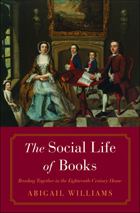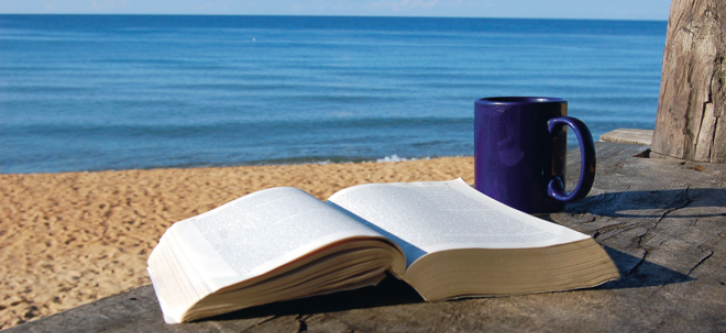The idea of the beach read encapsulates how most people seem to regard reading in the 21st century: a solitary activity, preferably performed in a comfortable place, and accompanied by an alcoholic beverage. Modern readers display their bona fides on Instagram with stylish photos of reading nooks and “still life”-type imagery featuring books (or, I'm sad to note, Kindles and iPads) and beverages of choice (most often, cups of coffee or glasses of wine). There’s even a curious trend of people posting pictures of themselves reading alone in bars, sending a slightly odd mixed-message: are they in search of company, or advertising the fact that they are above the need for company?
Whatever the motivation for sharing these photos, they all reflect the dominant view of reading as a virtuous, solitary, and slightly hedonistic act. However, this was not always the case.
 Rare bookseller Ernest Hilbert (of Bauman Rare Books) recently reviewed The Social Life of Books: Reading Together in the 18th Century Home by Abigail Williams for the Washington Post. Williams explores the “heyday of communal reading,” 18th-Century England, and details how rising literacy gave birth to a trend for reading aloud as a social activity. In fact, social commentators like Joseph Addison campaigned that reading should move from the private to the public sphere to improve education.
Rare bookseller Ernest Hilbert (of Bauman Rare Books) recently reviewed The Social Life of Books: Reading Together in the 18th Century Home by Abigail Williams for the Washington Post. Williams explores the “heyday of communal reading,” 18th-Century England, and details how rising literacy gave birth to a trend for reading aloud as a social activity. In fact, social commentators like Joseph Addison campaigned that reading should move from the private to the public sphere to improve education.
Other factors like poor light and failing eyesight created a need for books for be read aloud — witness Jo reading to her elderly Aunt March in Little Women. People even formed clubs and societies to talk about and read books to each other — self-improvement was not just a 20th-century mania. Like any fashion or trend, there soon emerged guidebooks to instruct the masses how to read aloud -- just like innumerable blog posts promise to teach today's bright young things how to "Up Your Selfie Game."
Hilbert's review is entertaining and enlightenting, and suggests that Williams' The Social Life of Books is a must-read for those interested in the history of books and literary fashions.
Read the review...



